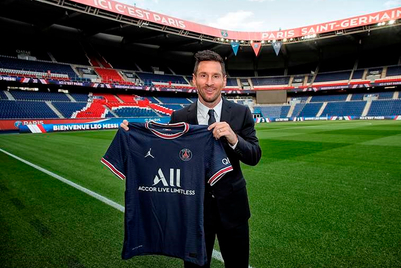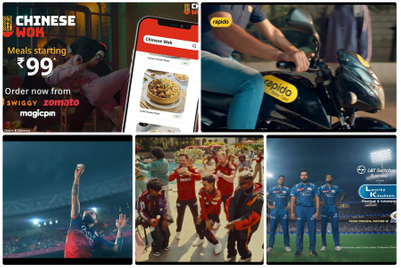The BBC’s World Cup ad modernises an ancient artistic tradition with a never-before-seen animation style to bring to life the history of the tournament.
Launched on Saturday (19 May) during the FA Cup Final, the film is an animation of a tapestry that illustrates iconic moments from previous World Cups and introduces the football stars competing in Russia this year. Every frame of the ad was individually embroidered, drawing influence from traditional Russian tapestries.
Along with the film, the campaign includes an actual seven-metre long tapestry that will expand with moments from this summer’s matches and be displayed in the UK.
The work was created by Xander Hart and Edward Usher at BBC Creative, the broadcaster’s in-house agency, and directed by Nicos Livesey through Blinkink.
Their goal was to create a real historical record of the World Cup that will live on after this competition: "Once we landed on that thought, we couldn’t shake it," Usher says.
Hart and Usher won the brief for the World Cup campaign last year out of a pool of 68 pitches. Rather than focusing on the host country or England’s fortunes alone, their aim was to highlight the global impact of the tournament.
"When England gets knocked out we don’t switch off as a nation; we support different teams and games. It’s a huge celebration of football," Usher says.
To capture the World Cup’s rich history, the pair settled on the idea of a tapestry, a traditional artform used to record historical events and tell stories. They wanted to modernise this centuries-old process while paying tribute to the beautiful Russian art and embroidery they had discovered.
This concept grew into the idea for an embroidered film, "something that hasn’t been done before," Usher says. They were inspired by the 2017 film Loving Vincent, which depicts the life of Vincent Van Gogh through animated oil paintings in the artist’s distinct style.
"Loving Vincent was such a phenomenal labour of love. It was so true to the craft and didn’t compromise," Hart says.
In the same vein, he adds, "we probably could have done an embroidery effect on animation or a CGI tapestry, but that wouldn’t have been honest to the idea."
Deciding on this time-consuming and unproven method was a risk, but Hart and Usher knew there was one director who could help make their vision a reality. Blinkink’s Livesey had made a groundbreaking music video in 2014 for the metal band Throne, in which he animated over 3,000 hand-sewn denim frames.
Livesey came on board as director and the team used London Embroidery Studio to create the embroidered frames. Designer Rune Fisker helped them develop a unique graphic style that would be inspired by Russian art without relying on clichéd images of the culture.
More than 227,000 metres of thread were used to make over 600 unique frames of tapestry, and if laid end-to-end they would measure over 1,200 metres in length.
Hart and Usher stumbled upon the soundtrack for the film early on: Ochi Chernye, a traditional Russian folk song in keeping with the campaign’s historical theme. They later found out this was a legendary Russian tune that had been sung at the weddings of Hart’s grandmother and great-grandmother.
Translated as "Dark Eyes", the song was recorded at Abbey Road Studios, arranged by Alex Baranowski, and features bass-baritone Sir John Tomlinson alongside a 40-piece orchestra.
Like the BBC’s famous 1990 World Cup theme sung by Luciano Pavarotti, "we thought this could be our version, a huge anthem that people would remember," Usher says.
The film ends with the tagline, "History will be made," a theme manifested by the BBC’s real, full-sized tapestry that will grow after this year’s World Cup. Fans will be able to choose their favourite moments from current matches to add to the artwork, which will be displayed at a museum.
Long after the tournament ends, the tapestry will be tangible evidence of the passion of Russia, of players and fans, and of the creators themselves.
(This article first appeared on CampaignLive.co.uk)




.jpg&h=334&w=500&q=100&v=20250320&c=1)
.jpg&h=334&w=500&q=100&v=20250320&c=1)


.jpg&h=334&w=500&q=100&v=20250320&c=1)

.jpg&h=334&w=500&q=100&v=20250320&c=1)

.jpg&h=334&w=500&q=100&v=20250320&c=1)









